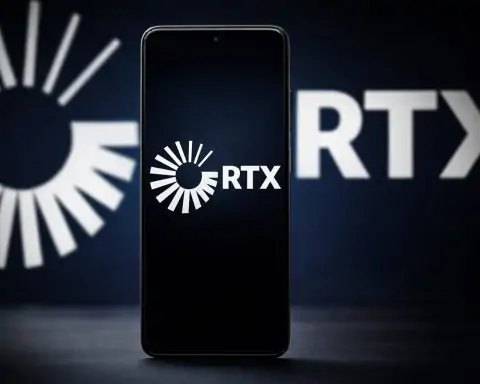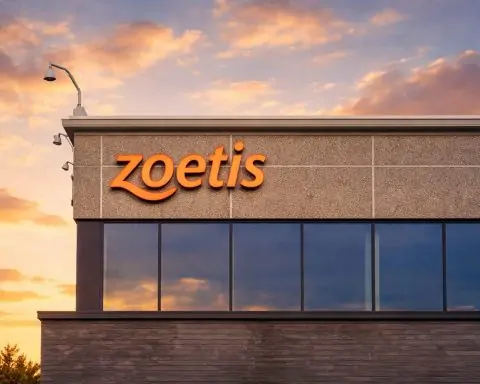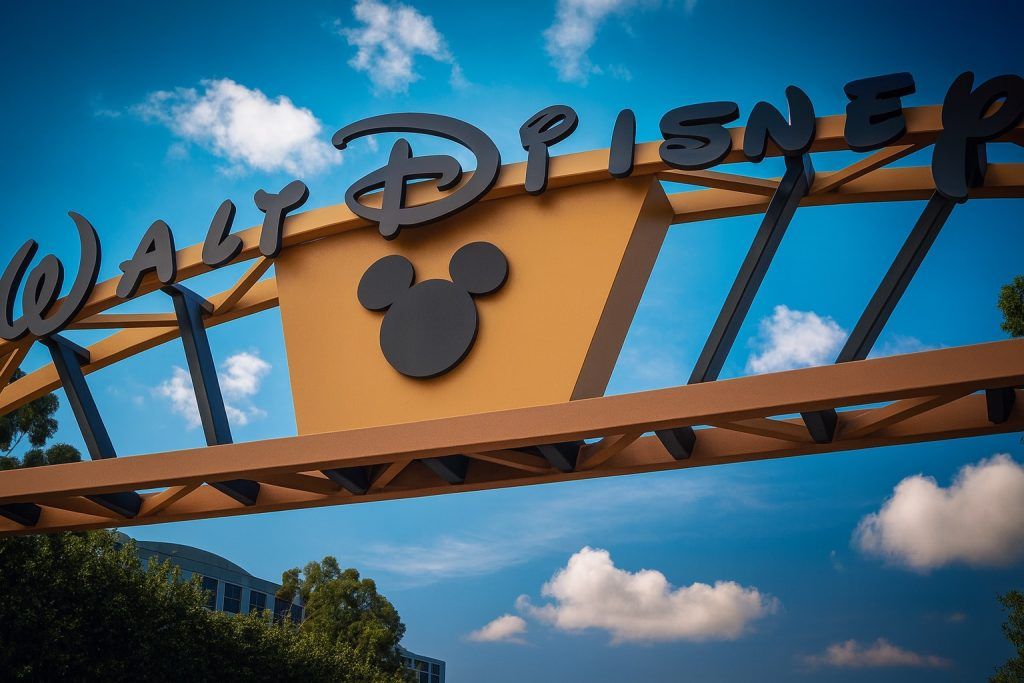Key Facts: Spotify founder Daniel Ek will step down as CEO on Jan 1, 2026 (becoming Executive Chairman) with Alex Norström and Gustav Söderström named co-CEOs [1]. The news briefly knocked the stock ~5% lower, after a year-to-date gain of over 60% [2]. In September, Spotify raised its Premium price to €11.99 (from €10.99) in many markets – a change that sent shares up ~8% on the announcement [3]. Subscriber counts remain high: in Q1 2025 premium members were up 12% to 268 million, with ~678 million monthly active users [4]. New initiatives include a “Lossless” hi-fi audio tier launched in Sept (free for Premium users) [5], and a pact to stream Spotify’s top video podcasts on Netflix from early 2026 [6]. On the flip side, regulators and users are pushing back. Turkey’s competition authority opened an antitrust probe into Spotify’s pricing and algorithms [7], and some U.S. listeners have boycotted the platform over controversial ICE recruitment ads [8]. Market analysts remain mixed: momentum-focused models rank Spotify highly [9], but firms like Goldman Sachs recently downgraded the stock after its surge.
Leadership Shake-Up Shakes Investors
In late September 2025, Spotify announced a major management overhaul. Founder and long-time CEO Daniel Ek will transition to a “European-style” executive chairman role on Jan. 1, 2026 [10]. Two senior lieutenants take the helm: Gustav Söderström, formerly CPO/CTO, and Alex Norström, former Chief Business Officer, will serve as co-CEOs. Spotify says Ek will focus on long-term vision and capital allocation, likening his new role to “moving from a player to a coach” [11]. Industry analysts praised the timing: PP Foresight’s Paolo Pescatore noted that Ek is “leaving on a high note, with big boots to fill” [12].
The market reaction was subdued: U.S. share prices slipped about 5% on the announcement [13] after a year of strong gains (roughly +63% YTD) [14]. Pescatore and others point out that Spotify’s first annual profit arrived only in 2024 after years of price hikes and cost cuts, so sustaining margins remains a challenge [15] [16]. Some experts have raised eyebrows at the dual-CEO model: AJ Bell analyst Dan Coatsworth quipped that “too many cooks spoil the broth” when a company has one chairman and two CEOs [17]. (Economies of scale aside, Spotify insists this structure will better balance product and business responsibilities.)
Financials and Stock Performance
Spotify’s recent results have been a mixed bag. In Q1 2025, revenue grew ~15% year-over-year to about €4.19 billion, powered by strong user growth – premium subscribers hit 268 million (+12%) and total monthly active users about 678 million [18]. But profit was squeezed by one-time costs: a €76 million payroll-tax charge tied to stock-based salaries dented operating profit [19]. The company forecast Q2 profit below Wall Street’s targets due to similar taxes [20].
By Q2 (reported July 29, 2025), the numbers looked even more uneven. Spotify posted a net loss of $0.42 per share, a swing from a $1.33 profit a year earlier [21]. Yet revenue was up 10% to $4.94 billion (above the $4.29 billion consensus) [22]. The EPS miss (bigger than $2 below expectations) reflected higher costs and weaker advertising demand. Management acknowledged that ad-supported revenue grew only ~5% (on a currency-neutral basis) and promised to improve its ad tools [23].
Despite these misses, Spotify’s stock has climbed sharply this year. The share price jumped more than sevenfold since 2023 on subscriber growth and cost-cutting [24]. As of Oct. 25, 2025 the stock was trading in the mid-$600s (below its recent ~$785 52-week high) [25]. Wall Street sentiment is cautiously optimistic. Most analysts have Buy/Outperform ratings and high price targets (ranging roughly $775–$900) [26]. MarketBeat notes that 21 of 34 covering analysts rate SPOT a Buy [27]. However, there are skeptics: Weiss Ratings recently gave Spotify a C- (Hold) grade, and Goldman Sachs trimmed its outlook in October (noting the stock’s strong run).
New Products, Partnerships and Features
Spotify has been busy expanding its platform. In early October, the company unveiled major advertising partnerships and new tools. It opened up its audio/video ad inventory to Amazon DSP users, linking Amazon’s ad network directly with Spotify’s 696 million global users. Spotify also added integrations with ID5 and Yahoo DSP, and plans to allow private-market podcast deals via Megaphone on its ad exchange. The goal: boost ad sales and let marketers easily run campaigns on Spotify alongside other channels. Early results from its self-serve Ads Manager suggest these updates work: campaigns using a Web-traffic objective saw page views jump 103%.
On the consumer side, Spotify launched a long-anticipated “Lossless” tier on Sept. 10, 2025 [28]. Premium subscribers can now stream most of Spotify’s 100+ million tracks in 24-bit/44.1 kHz FLAC quality at no extra cost [29]. This “hi-fi debut” positions Spotify against rivals like Apple Music and Tidal and caters to audiophiles. The rollout (now live in over 50 countries) highlights Spotify’s push into higher-end audio features [30].
In app development, leaks hint at more user-facing innovation. TechCrunch reports Spotify is testing a new “SongDNA” feature [31]. Seen in reverse-engineered app code, SongDNA would let listeners explore the credits behind a track – songwriters, producers, engineers, vocalists, etc. – via an interactive interface [32]. If launched, it would rival Tidal’s credits explorer and help users discover music by tapping into the people network behind songs [33].
Behind the scenes, Spotify has been trimming its workforce to cut costs. (Recent reports indicate layoffs of a few hundred positions were announced via SEC filings, aiming to boost efficiency – though the company hasn’t publicized details.) Management delays and cancellations have also surfaced: for example, a promised new “superfan” subscription tier has been pushed back with no launch date in sight [34].
One of the most high-profile content deals is a new distribution partnership with Netflix. In mid-October 2025, Netflix announced it will host full video versions of Spotify’s top podcasts starting early 2026 [35]. Shows like The Dave Chang Show and The Bill Simmons Podcast will appear on Netflix (excluded is the Joe Rogan podcast). Netflix’s licensing head called it a way to tap the “growing appeal” of video podcasts [36], and Spotify’s podcast chief said it “offers more choice to creators and unlocks a completely new distribution opportunity” [37]. This deal illustrates Spotify’s strategy of broadening its content reach beyond its own app.
Regulatory and Controversy Challenges
Spotify’s global reach hasn’t shielded it from regulatory and PR headaches. In late Sept. 2025, Turkish antitrust regulators opened a probe into Spotify to check for “discriminatory practices and predatory pricing” [38]. The Turkish Competition Authority wants to know if Spotify’s algorithms favor certain music rights-holders and if its low local pricing unfairly hurts competitors or creators [39]. This follows earlier EU/UK pressure on platforms to police content; in the U.S., a House Judiciary committee has begun scrutinizing Spotify and other tech companies over “disinformation” policies (though details are still emerging).
On the content side, Spotify has also faced backlash over advertising. In October, Euronews reported that some U.S. users began boycotting Spotify after it aired recruitment ads for ICE (U.S. immigration enforcement) featuring phrases like “dangerous illegals” [40]. Spotify defended the ads as complying with its policies (saying they were part of a broad government media campaign) [41], but the incident added to a string of controversies. In previous years, artists like Neil Young and Joni Mitchell had criticized the platform (over Joe Rogan’s podcast, AI-generated music, etc.), and some refused to allow their music on Spotify. While these disputes attract media attention, Spotify’s large subscriber base has continued to grow, suggesting they have not materially hurt its business so far.
Expert Commentary and Analyst Views
Industry analysts see Spotify at a crossroads. After the CEO transition, PP Foresight’s Paolo Pescatore noted that the move comes “on a high note” but leaves the new leaders with “big boots to fill” [42]. He points out Spotify is still far ahead of rivals – nearly 700 million monthly users versus ~90 million for Apple Music [43] – but must keep innovating to justify its valuation. Others emphasize Spotify’s mature market position: Aj Bell’s Dan Coatsworth warned that a triple-leader setup is unusual for a company of Spotify’s size and could lead to confusion [44].
On Wall Street, quantitative and technical models are largely positive. For example, stock screens by Validea show Spotify scoring extremely well on momentum criteria [45]. One ts2.tech write-up notes that Spotify ranks highly under momentum-based strategies, signaling “strong interest” as long as its momentum score stays elevated [46]. Indeed, Chartists point out that a majority of recent trading in SPOT is above the 50-day moving average, an indicator of short-term strength [47].
However, many traditional analysts urge caution after the recent rally. Goldman Sachs lowered its rating to Neutral in early October (citing the stock’s big run) and trimmed its price target modestly. An Oct. 6 music-industry news site reported that Spotify’s Q2 loss and a major downgrade from Goldman shook investor confidence [48]. Still, the firm and others remain generally bullish on Spotify’s growth prospects, forecasting mid-teens annual revenue increases as the company expands into emerging markets and improves its ad sales [49].
Investor and Public Reaction
Investors have reacted to each major news with quick moves. The September price-hike announcement saw an immediate spike in the stock, reflecting confidence that Spotify can pass on costs without losing users [50]. Conversely, the CEO change announcement in late Sept. triggered a small sell-off (~5% dip) since shareholders were taking profits on the recent run-up [51]. Options market data from ts2.tech noted heavy call buying around the $695 strike expiring Oct. 24, indicating some traders were betting on continued upside after the dip [52].
Overall, Wall Street remains divided. As of Oct. 2025 the average analyst target is around $731 (about 15% above recent levels) [53]. Twenty-one out of 34 analysts rate SPOT a Buy (only one Strong Buy) [54]. Notably, several top firms have set targets in the $775–$900 range [55]. This suggests most still expect long-term growth, albeit at a slower pace now that profitability has arrived.
Consumers and creators are watching closely too. The response to new features has been mostly positive: audiophiles have welcomed lossless streaming [56], and the Netflix deal has been seen as a coup for podcast creators. However, Spotify’s user community has voiced annoyance at the latest price increases and political ad content. Social media showed many users complaining about the ICE ads, with some vowing to cancel (“Spotify: This was gross. I definitely don’t want to hear about ICE while listening to music” [57]). It’s unclear how many will actually leave – Spotify’s ad tier is free and many listeners tolerate ads – but the episode underscores the tightrope Spotify walks between revenue and user trust.
Outlook: As of Oct. 25, 2025, Spotify stands at a pivotal moment. The company enters a new leadership era with a broadened executive team and a strategy that leans heavily on partnerships (Netflix, Amazon) and premium features (hi-fi audio, exclusive content). Its strong user base (nearly 700M monthly listeners [58]) and recent profit win give it momentum. But rising costs (artist royalties, payroll taxes) and increasing competition from big tech (Apple, YouTube, Amazon) will test Spotify’s business model. Investors and users will be watching upcoming earnings (Q3 results are due Nov. 3–4, 2025) and how well the co-CEOs execute. For now, Spotify’s stock remains on many watchlists – buoyed by confidence in subscriber growth, but not without its skeptics.
Sources: Recent financial reports and news releases from Spotify; analysis by Bloomberg, Reuters, MarketBeat, ts2.tech, TechCrunch, and others [59] [60] [61] [62] [63] [64] [65] [66] [67] [68]. These include company statements and third-party coverage (Reuters, CNBC, etc.) as of Oct. 25, 2025.
References
1. www.reuters.com, 2. www.reuters.com, 3. ts2.tech, 4. www.reuters.com, 5. ts2.tech, 6. www.reuters.com, 7. www.reuters.com, 8. www.euronews.com, 9. ts2.tech, 10. www.reuters.com, 11. www.reuters.com, 12. www.reuters.com, 13. brandequity.economictimes.indiatimes.com, 14. www.reuters.com, 15. brandequity.economictimes.indiatimes.com, 16. www.reuters.com, 17. brandequity.economictimes.indiatimes.com, 18. www.reuters.com, 19. www.reuters.com, 20. www.reuters.com, 21. www.marketbeat.com, 22. www.marketbeat.com, 23. www.marketbeat.com, 24. www.reuters.com, 25. www.marketbeat.com, 26. www.marketbeat.com, 27. www.marketbeat.com, 28. ts2.tech, 29. ts2.tech, 30. ts2.tech, 31. techcrunch.com, 32. techcrunch.com, 33. techcrunch.com, 34. www.edmtunes.com, 35. www.reuters.com, 36. www.reuters.com, 37. www.reuters.com, 38. www.reuters.com, 39. www.reuters.com, 40. www.euronews.com, 41. www.euronews.com, 42. www.reuters.com, 43. www.reuters.com, 44. brandequity.economictimes.indiatimes.com, 45. ts2.tech, 46. ts2.tech, 47. www.marketbeat.com, 48. www.edmtunes.com, 49. www.edmtunes.com, 50. ts2.tech, 51. brandequity.economictimes.indiatimes.com, 52. ts2.tech, 53. www.marketbeat.com, 54. www.marketbeat.com, 55. www.marketbeat.com, 56. ts2.tech, 57. www.euronews.com, 58. www.reuters.com, 59. www.reuters.com, 60. www.reuters.com, 61. ts2.tech, 62. ts2.tech, 63. www.reuters.com, 64. techcrunch.com, 65. www.reuters.com, 66. www.euronews.com, 67. ts2.tech, 68. www.marketbeat.com







